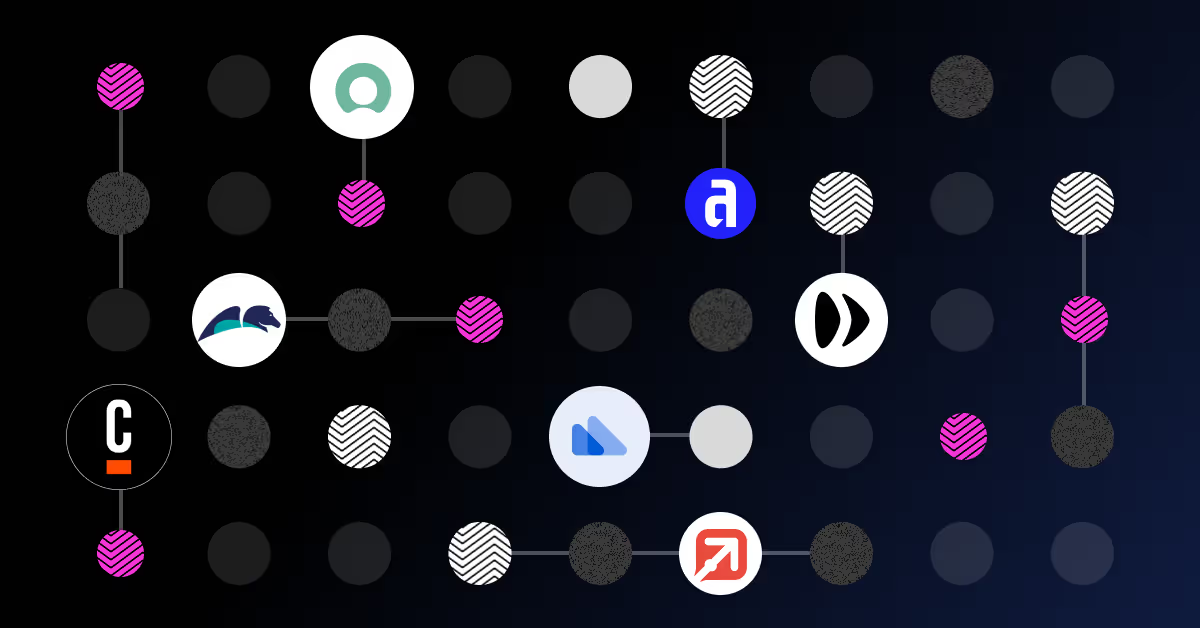4 ways to start using AI in operations management right now (2026)
.avif)
There is a strong desire to start using AI in many companies, but the “how” is not always clear. Everyone senses the enormous opportunity to operationalize AI for service delivery, but while some are charging ahead, others are still getting their ducks in a row.
A few months ago, I hosted a round table with Operations and Shared Services Leaders to ask whether they were AI Stormers or AI Strivers. On one side of the divide, 25% were AI Stormers, making significant strides in operationalizing AI. On the other, 75% were AI Strivers, eager to get started but yet to figure it out.
If you’re in the latter category, remember that the majority of service tasks revolve around the following three steps:
- Work out what the customer is asking you to do.
- Get the data that you need to do it.
- Complete the task.
Keep this in mind as you look to introduce AI in operations management. We’re going to get into more specifics later, but let’s start with planning your strategy.
Figure out an AI strategy
When you’re first getting started, you need to detail the practical order of events you want to happen and any potential consequences that may occur. Think about how you’re going to manage risks around AI. For example, what measures you will take to keep humans fully in control until the AI testing validation reaches an acceptable level - that should be at least 90% accuracy.
As you develop your strategy, the first rule of thumb should be to keep it simple. You don’t need the advice of a team of data scientists, but rather a methodical process for selecting the right off-the-shelf product.
The pool of true AI experts is very small (AI Olympians amongst a host of amateurs) - this means any attempt to build and train models in-house will likely fail miserably. You need to have vast amounts of data, you need to curate that data, and you need to have people with the skills to validate the data. If you don’t have these resources, you’ll end up with something very average, not to mention that subpar AI implementation could open you up to all sorts of security and privacy risks.
In 95% of cases, the answer is to use best-in-class external services and products that can get started immediately, with the support of experts who know what they’re doing.
Consider hiring a Chief AI Officer
You will need someone to coordinate all this change and that’s where a Chief AI Officer makes a good hire. This role is completely new, so rather than looking for someone with experience in that position, you’ll be recruiting someone who is one part entrepreneur and one part polymath - and preferably someome who is a bit legally savvy.
Machine learning wizardry isn’t vital, but they need to understand the technology and the 'art of the possible' to an extent where they can excite and coordinate the tech geeks and wider business appropriately.
This role can fulfil one of two purposes. If you’re looking for a person who will enable the business to use more AI, for instance introducing a customer service chatbot, then this will be an operational job that’s practically focused.
However, if your goal is to completely rip up the script and make your product or service AI-driven, then you’ll need a C-Suite hire to steer such a degree of innovation.
What are the benefits of using AI in operations management?
The most important aim of operations management is to make the best possible use of the resources available to you and to keep everything running as smoothly as possible. There is no better tech tool on the market right now for achieving this goal than AI. The tasks that are repetitive and slow can in many cases be handed over to AI, slashing the time they take and freeing up resources to be used elsewhere. Teams that were once buried in manual work suddenly have so many extra hours to spend on work that requires human skills and expertise. When you have a clear view of your operation and can see the work that’s being done via orchestration, using an added layer of AI for operations management can deliver the transformative change you’re looking for. Productivity, efficiency, and optimization – words so important in operations management – all improve drastically. Not only does everything get done faster, but you can save money, reduce mistakes, get a clearer understanding of what needs to be improved, and scale your operations easily to meet fluctuating demand.
4 AI tools for operations management
.avif)
Below are four practical ways you can introduce AI into your operations right now:
1. Email classification
Manually reading and scanning emails is a huge time drain for large service centers dealing with thousands of daily email requests – but imagine an automated Hogwarts-esque 'sorting hat' for your inbox: that's email classification. It instantly categorizes incoming emails by urgency, who should handle them, and the nature of the request, separating what needs to be dealt with in a few hours from those that can be left until tomorrow. Take, for example, customer service product emails containing urgent order changes. These need to be at the top of the priority list, so they are handled before an important customer’s order ships out. On the other hand, emails like general information inquiries or positive feedback are safe to be dealt with a little later. AI-enabled triage analyzes and sorts your emails in the blink of an eye using GPT-4 technology, getting the right emails to the right person, leaving staff free to focus on the important stuff. With time-saving AI-enabled triage to analyze and sort your emails in the blink of an eye, staff are free to focus on higher-level work. Our testing shows a 30-hour reduction in time spent per 1000 emails. For mid-sized operations, this translates to saving the expense of two full-time employees each year, alleviating the strain on your resources.
2. Data extraction
Data entry for tasks like onboarding, invoices, and insurance policies is seemingly never-ending. Thankfully, AI is here to rescue you from the tedium. AI-enabled solutions automatically extract the information you need from emails and documents and work with other systems in the workflow to populate the necessary forms. Insurance claims, for example, are a constant demand for insurance companies that typically take a lot of time to process. An AI data extraction solution retrieves all the information required from the claim form, supporting document, and any accompanying communications, and inputs it into the system. Insurance claims get processed much faster and human errors (so often the side effects of repetitive work) are hugely minimized. These solutions use advanced language understanding to identify the key pieces of data within emails, even industry-specific terms that traditional models often miss. The result? Dramatically reduced manual work, fewer errors, and a super-smooth operation. Workflows that were previously clunky and laborious are transformed, slashing the time spent on painstakingly slow data entry, so you can spend your working hours on higher-value tasks.
3. Intelligent document processing
A constant stream of documents means a hefty amount of time spent categorizing and extracting the essential data. Ordinarily, this task takes a person around 2-5 minutes to perform manually. Intelligent Document Processing (IDP), however, can get it done in approximately 30 seconds per page. The AI solution scans the document, issues a confidence score on the certainty of the data, and if it’s below the threshold, passes it on to a human to verify and correct. For large-scale operations handling mountains of documents a day, this is a welcome advancement. IDP also means fewer errors are being made and the data is more reliable.
4. Sentiment analysis AI
How satisfied are your customers? Sentiment analysis AI removes the guesswork, employing Natural Language Understanding (NLU) to intelligently assess the emotional tone of your customers in emails and documents. Using traditional methods, this process requires complicated, expensive adaptations with around 70% accuracy. However, when sentiment analysis is integrated into existing workflows, that accuracy rate jumps to approximately 90%. If you have hundreds of customer service emails coming in a day, being able to constantly monitor the overall sentiment can be hugely beneficial. Suppose a service center recently changed their pricing structure and existing customers were notified. They might receive an influx of emails with language like ‘too expensive’ or ‘cancel our contract’ indicating that a lot of customers were very unhappy with the price changes. With sentiment analysis, they would be able to quickly understand how wide the problem is and immediately begin rectifying the situation. Plus, without the need for manual sentiment checks, the time spent on handling large email volumes is reduced. Customer service operations become far more efficient, allowing for prompt responses that register customer sentiment and create more positive interactions.
These AI superpowers are effective on their own, but the impact is amplified when you combine these tools across your entire service process. The sheer amount of time you'll save is astonishing. With all that extra capacity, your business can skyrocket its innovation, create unmatched customer experiences, and keep pace with competitors.
What does the future hold for service delivery?
Looking forward, there is going to be a radical change in the service delivery industry. Automation means there will be fewer jobs in the provision of service and there will be an expectation that service will happen much more quickly.
However, the answer to meeting this demand doesn’t lie in job losses, but in augmentation, and pivoting staff towards customer success. While AI takes care of the menial and repetitive work, the opportunity arises for the human workforce to deliver superior levels of customer service.
Take, for example, an insurance company, where claims typically take ages to be processed. With AI handling the manual tasks, employees can process claims faster and focus their energies on the human side of service delivery. We’re then looking at customer delight, instead of simply customer service.
Operationalize AI with Enate
Are you a stormer or a striver? If you’re ready to start leading the way in operationalizing AI, Enate makes it as simple as possible. Built on the Open AI Microsoft Azure network and integrated with our platform, EnateAI tackles those tedious jobs, freeing you to focus on what matters.
FAQs
What is AI in operations management?
In the case of operations management, we’re talking about all the AI technologies that are specifically designed to handle slow and repetitive tasks and get everything running as efficiently as possible. This includes tech like machine learning (ML), robotic process automation (RPA), and natural language processing (NLP), which can make short work of routine jobs, saving you time and resources.
Intelligent Document Processing, for example, uses all the aforementioned AI technologies to create a tool that removes the monotonous pain from handling large volumes of paperwork. For companies like those in the logistics sector, this is a groundbreaking advancement. Areas like supply chain management become unrecognisably easier to manage, as shipping documents, invoices, and purchase orders can all be processed in a fraction of the time and with a much greater degree of accuracy. In a sector where time really is of the essence and mistakes can be costly, IDP is the ideal solution.
While efficiency is the big attraction of AI in operations management, there are other advantages. Tools like sentiment analysis also give you more transparency into customer and client satisfaction, paving the way for more informed decisions. What’s more, all these solutions are scalable, easily managing extra workloads through peak times or periods of growth. Altogether, introducing these cutting-edge solutions into operations management in the right way will have helped you reach new heights of productivity whilst being more cost effective than the old way of working.
How can AI improve operations management?
The underlying power of all these different technologies is automation. Whether it’s data extraction, email classification, intelligent document processing, or other AI-powered solutions, they all aim to take on the most tedious routine tasks, so human workers are free to focus on the higher-level aspects of their jobs.
A specific example of this would be how AI data extraction can improve the management of customer onboarding. This is a procedure that influences the first impression a new customer has of a company, so it’s important to get it right. Usually, there are a lot of different bits of paperwork involved, such as registration forms and compliance documents. When a lot of customers are being onboarded and the data is being extracted from these documents manually, it can be very slow going. Automating the data extraction means it all gets done in a flash, so employees can instead focus on the human side of things, like creating a personalized customer experience to welcome them to the company and providing the best possible support.
As a result, the task is done more efficiently, taking less time and resources, and therefore allowing staff to contribute more value to the most important aspects of the business. This is just one example of how AI improves operations management and the great news is there are many more applications that have a similarly significant effect.
What are some common AI tools used in operations management?
- Robotic Process Automation (RPA): These are the AI workhorses that take on all the tedious jobs that most people would be happy to see the back of. If a task is slow and rule-based, there’s a good chance RPA is the time-saving solution. These tools can handle invoice processing, data entry, and inventory management, to name just a few. By minimizing the need for manual intervention, RPA tools speed up every process they’re applied to while achieving greater accuracy.
- Predictive analytics: With this technology, it is possible to look into the past to better understand what decisions to make for the future. Capable of analyzing large amounts of historical data, predictive analytics can forecast future outcomes. In an area like supply chain management, this means being able to anticipate future demand and make decisions about inventory and logistics appropriately.
- Natural Language Processing (NLP): The magic of NLP tools is their ability to analyze and interpret unstructured data. NLP doesn’t rely on predefined keywords but can understand the nuance and complex meaning in language. It is this technology that powers tools like email classification, which can quickly scan a message, establish its meaning, and make sure it’s sent to the right place or person instantly. NLP is also the basis of sentiment analysis and automated responses, which contribute to superior customer service.
- Machine learning algorithms: Undoubtedly the brains behind the operation, machine learning algorithms continuously learn from data, allowing for the recognition of patterns and supporting decision-making without human involvement. This results in valuable tools such as automated fraud detection in finance and inventory optimization. ML algorithms are also another component of sentiment analysis, which together with NLP can interpret complex language to give you a clear picture of your customer’s satisfaction levels.
What industries benefit the most from AI in operations management?
- Healthcare: Due to the amount of patient data and records that need to be safely managed in healthcare, AI tools like intelligent document processing make a big difference. IDP manages records and other paperwork swiftly and accurately, making sure the correct information is available to healthcare providers.
- IT: Most IT departments or service centers deal with hundreds of emails a day, making it a challenge to correctly prioritize requests. Solutions like email classification can instantly scan each communication and deduce whether it is urgent or not, and get it to the right person to deal with.
- Logistics and supply chain: Between shipping documents, purchase orders, invoices, and everything else, there’s a lot of paperwork involved in logistics. This is where AI so solutions like IDP can have a huge impact, processing everything at speed and reducing costly errors to a minimal level.
- Finance: This is a sector known for repetitive admin tasks, making it perfect for AI solutions. Invoice processing, for example, is an ideal application for AI-powered data extraction. What once took hours of employees' time can be done much quicker, cutting costs and improving productivity.
- Customer service: Any company that manages large volumes of customer communications can benefit greatly from introducing AI into their operations. Solutions like sentiment analysis help you to better understand your customer’s mood and make informed decisions to provide the best possible service.
These are just a few of the areas that can benefit from AI in operations management but wherever there are routine, repetitive tasks that take up a lot of time, there is a good chance AI tools will make a big improvement.




